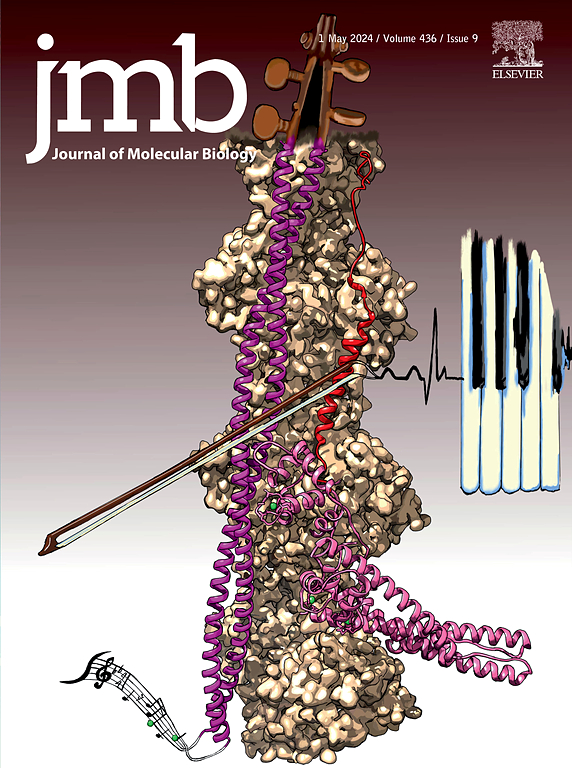SeqWord Motif Mapper: A Tool for Rapid Statistical Analysis and Visualization of Epigenetic Modifications in Bacterial Genomes
IF 4.5
2区 生物学
Q1 BIOCHEMISTRY & MOLECULAR BIOLOGY
引用次数: 0
Abstract
Genomic methylation in bacteria plays a crucial role in gene regulation, chromosome replication, pathogenicity, and defense against phages. While single-molecule real-time (SMRT) sequencing technologies have advanced the detection of epigenetically modified bases, the statistical analysis of their distribution and the possible roles they play in bacterial cells remains challenging. To address this gap, we developed SeqWord Motif Mapper (SWMM), a computational tool designed for the statistical analysis and visualization of bacterial methylation patterns. SWMM utilizes PacBio sequencing data to identify sequence coverage, methylation motif distribution, and putative functional associations. Implemented in Python 3.9, the tool is platform-independent and requires minimal dependencies, making it accessible to a wide range of users. The SWMM command-line interface and a web-based version of the program facilitate the exploration of epigenetic modifications across bacterial genomes. Through case studies on different bacterial and archaeal taxa, we demonstrated that genome methylation in microorganisms extends beyond canonical sites and possibly influences gene expression, adaptation, and genome architecture. The tool enables detailed statistical evaluation of methylation motif distribution and provides insights into the potential regulatory roles of epigenetic modifications in bacterial genomes. SWMM is freely available at https://begp.bi.up.ac.za, with source code hosted on GitHub at https://github.com/chrilef/BactEpiGenPro.

SeqWord Motif Mapper:细菌基因组表观遗传修饰的快速统计分析和可视化工具。
细菌基因组甲基化在基因调控、染色体复制、致病性和对噬菌体的防御中起着至关重要的作用。虽然单分子实时(SMRT)测序技术促进了表观遗传修饰碱基的检测,但对其分布及其在细菌细胞中可能发挥的作用的统计分析仍然具有挑战性。为了解决这一差距,我们开发了SeqWord Motif Mapper (SWMM),这是一个用于细菌甲基化模式统计分析和可视化的计算工具。SWMM利用PacBio测序数据来确定序列覆盖范围、甲基化基序分布和假定的功能关联。该工具在Python 3.9中实现,与平台无关,并且需要最小的依赖关系,使其能够被广泛的用户访问。SWMM命令行界面和基于web的程序版本促进了跨细菌基因组的表观遗传修饰的探索。通过对不同细菌和古细菌分类群的案例研究,我们证明了微生物基因组甲基化延伸到规范位点之外,并可能影响基因表达、适应和基因组结构。该工具能够对甲基化基序分布进行详细的统计评估,并提供对细菌基因组中表观遗传修饰的潜在调节作用的见解。SWMM可以在https://begp.bi.up.ac.za上免费获得,其源代码托管在GitHub上https://github.com/chrilef/BactEpiGenPro。
本文章由计算机程序翻译,如有差异,请以英文原文为准。
求助全文
约1分钟内获得全文
求助全文
来源期刊

Journal of Molecular Biology
生物-生化与分子生物学
CiteScore
11.30
自引率
1.80%
发文量
412
审稿时长
28 days
期刊介绍:
Journal of Molecular Biology (JMB) provides high quality, comprehensive and broad coverage in all areas of molecular biology. The journal publishes original scientific research papers that provide mechanistic and functional insights and report a significant advance to the field. The journal encourages the submission of multidisciplinary studies that use complementary experimental and computational approaches to address challenging biological questions.
Research areas include but are not limited to: Biomolecular interactions, signaling networks, systems biology; Cell cycle, cell growth, cell differentiation; Cell death, autophagy; Cell signaling and regulation; Chemical biology; Computational biology, in combination with experimental studies; DNA replication, repair, and recombination; Development, regenerative biology, mechanistic and functional studies of stem cells; Epigenetics, chromatin structure and function; Gene expression; Membrane processes, cell surface proteins and cell-cell interactions; Methodological advances, both experimental and theoretical, including databases; Microbiology, virology, and interactions with the host or environment; Microbiota mechanistic and functional studies; Nuclear organization; Post-translational modifications, proteomics; Processing and function of biologically important macromolecules and complexes; Molecular basis of disease; RNA processing, structure and functions of non-coding RNAs, transcription; Sorting, spatiotemporal organization, trafficking; Structural biology; Synthetic biology; Translation, protein folding, chaperones, protein degradation and quality control.
 求助内容:
求助内容: 应助结果提醒方式:
应助结果提醒方式:


